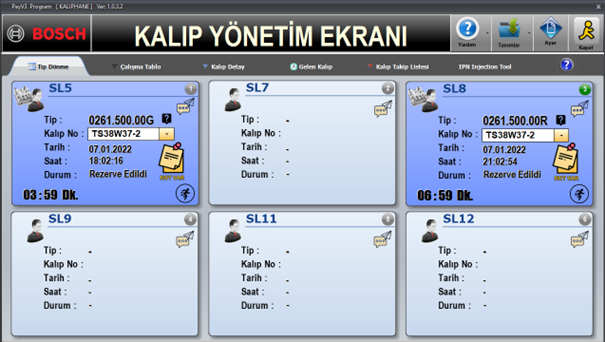.
The system is sent from the workshop after confirming that the desired mold is correct. It is to provide traceability, blockage and traceability data with computer management by preventing erroneous transactions and mold mixing during the applied transactions.
The traceability screen used during the use of the molds in the mold warehouse line in the workshop is shown above. Here, the mold request from the workshop is indicated on the screen in the program.
It is essential to track the source and history of parts and immediately confirm their suitability to ensure fast and cost-effective cross-departmental tool call processes. If the suitability and availability of a part is not fully known, it wastes more effort and time than necessary, which increases costs significantly.
Other key benefits include:
According to the availability of the desired type of mold to the desired station, the mold request is immediately answered by the system and the mold is reserved or the mold specified as an option can also be reserved. This The note specified in the templates and the note to be entered instantly are recorded as information about the template. In this way, the desired mold is informed about the points that need attention. It gives the status information of the patterns of the desired type. Patterns that will be used and patterns that will not be used and the reason are indicated.
When the pattern request is made and if this period exceeds the appointment date, the line gives a warning on the screen with coloring and flashing.
On the Die Type Rotation and Die Tracking System, the mold conditions are taken under instant control and examined.
The system provides instant communication by providing messaging between two different lines.
Barcodes ensure that every piece carries a unique identifier wherever it goes. Metal plate labels are fixed to each of the molds. Important pieces of data encoded for traceability purposes in the automotive industry include information such as part, serial, lot or model number. Adding 3 labels on the right, left and side of the mold prevents complexity in the approval process.
